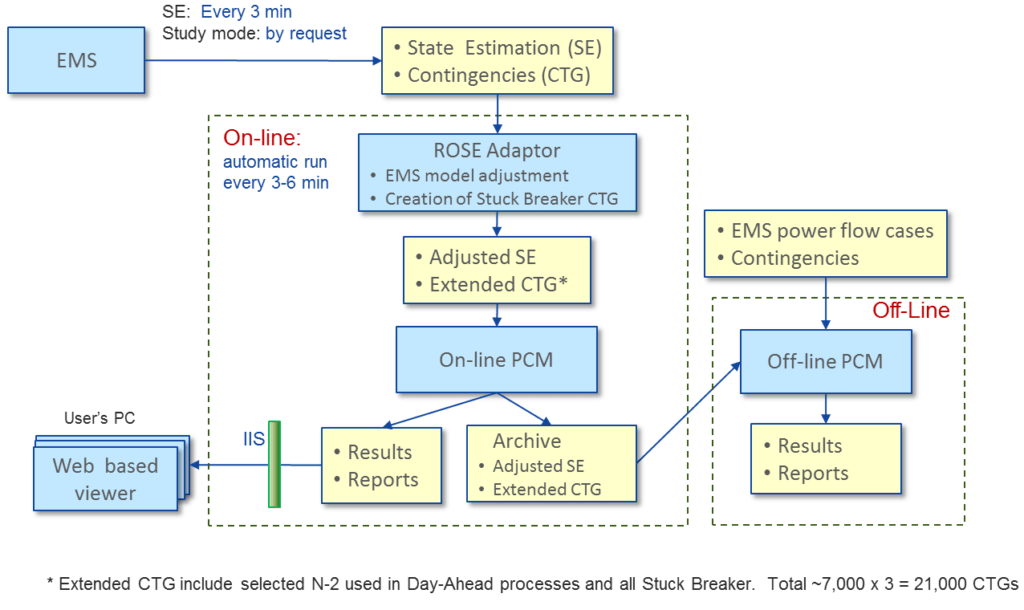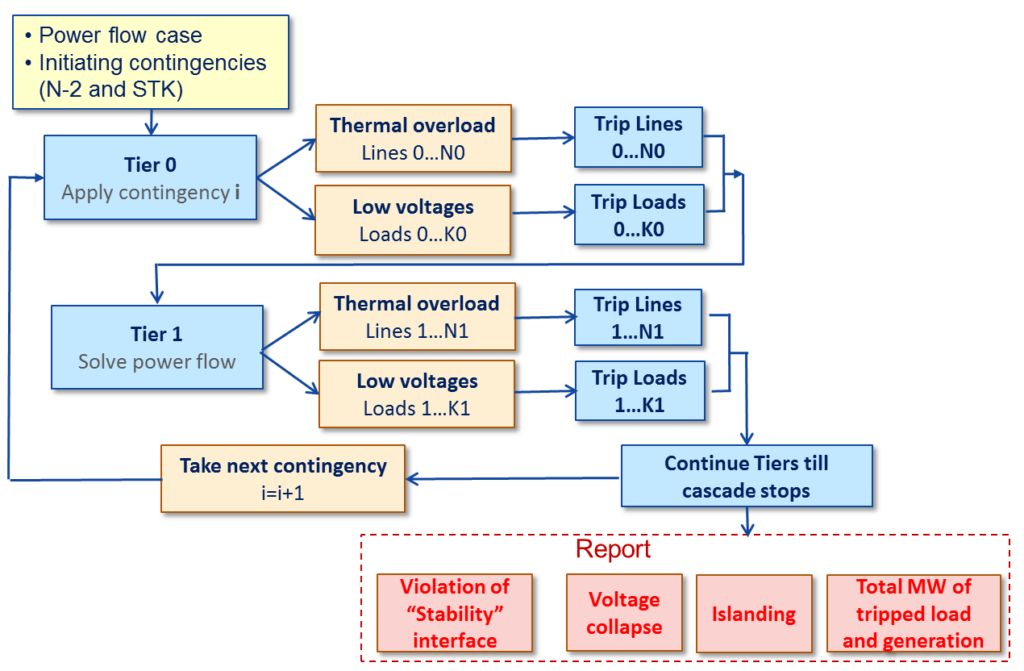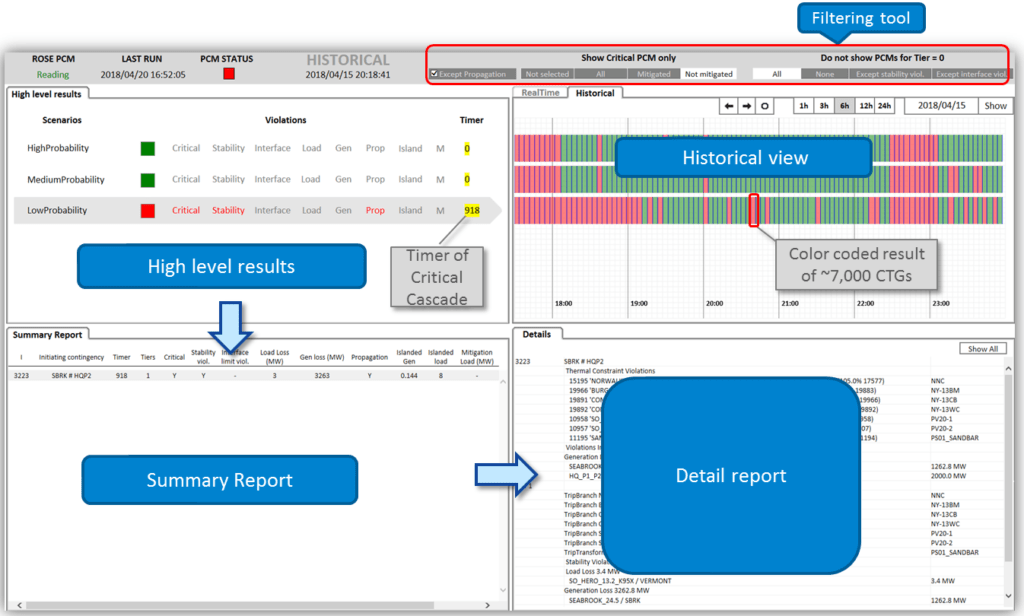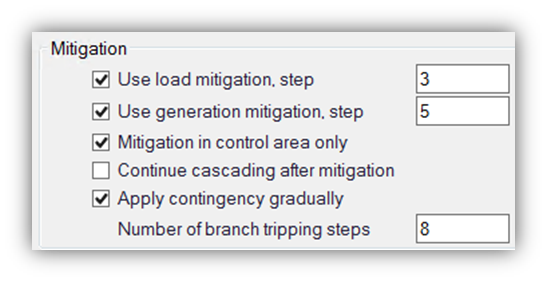ROSE Potential Cascading Modes (PCM)
ROSE PCM is an online tool that identifies initiating events that lead to cascading outages caused by successive tripping of:
- Branches that are overloaded above the threshold;
- Loads due to voltage violations below the threshold; and
- Generators due to voltage violations below/above the threshold.
Online ROSE PCM is integrated with an EMS system of a utility and runs continually.
ROSE PCM automatically identifies tiers in the cascading sequence and determines the consequences of cascading outages. It performs steady-state analysis of fast developing cascading events. ROSE PCM has a comprehensive modeling capability to handle a real-life sized EMS node-breaker model. It effectively performs topology processing.

(ROSE PCM data flow at ISO New England)
Modeling of cascading process is done as shown below:

Full AC solution is performed for all contingencies. Stability-based interface limits are used as monitored constraints.
ROSE PCM visualizes the results of cascading analysis. ROSE PCM visualization at ISO New England is shown below.

GUI allows quickly analyze results:
- Filtering specific groups of Critical contingencies
- Drill-down to details of any specific contingency
- Color-coded historical view
Optimal Mitigation Measures are a part of ROSE PCM.

Figure 53. Calculation of Mitigation Measures in ROSE PCM
ROSE PCM calculates a reasonable minimal amount of load and generation shedding to get feasible AC solution after a cascading chain caused collapse.


